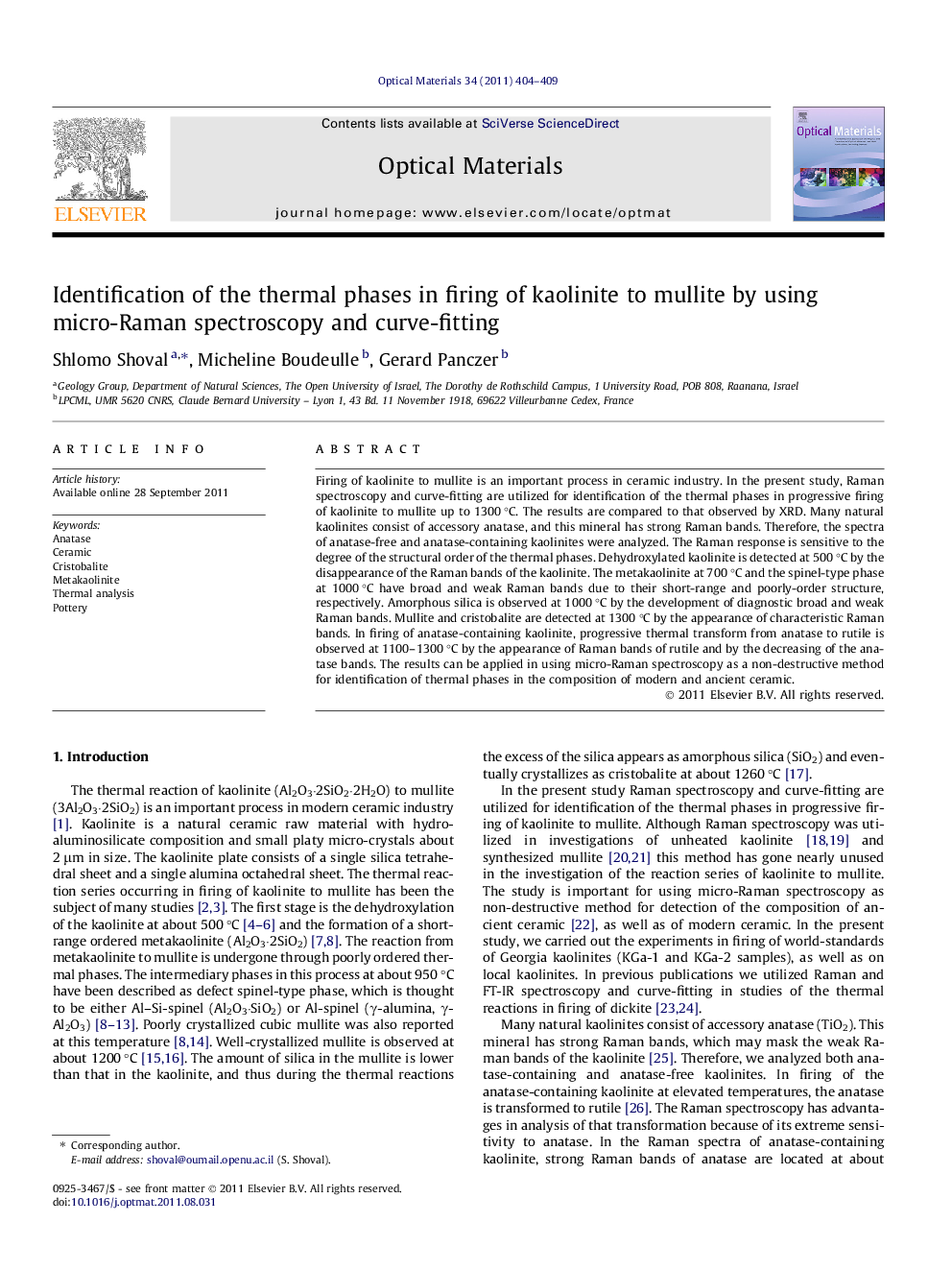| Article ID | Journal | Published Year | Pages | File Type |
|---|---|---|---|---|
| 1494678 | Optical Materials | 2011 | 6 Pages |
Firing of kaolinite to mullite is an important process in ceramic industry. In the present study, Raman spectroscopy and curve-fitting are utilized for identification of the thermal phases in progressive firing of kaolinite to mullite up to 1300 °C. The results are compared to that observed by XRD. Many natural kaolinites consist of accessory anatase, and this mineral has strong Raman bands. Therefore, the spectra of anatase-free and anatase-containing kaolinites were analyzed. The Raman response is sensitive to the degree of the structural order of the thermal phases. Dehydroxylated kaolinite is detected at 500 °C by the disappearance of the Raman bands of the kaolinite. The metakaolinite at 700 °C and the spinel-type phase at 1000 °C have broad and weak Raman bands due to their short-range and poorly-order structure, respectively. Amorphous silica is observed at 1000 °C by the development of diagnostic broad and weak Raman bands. Mullite and cristobalite are detected at 1300 °C by the appearance of characteristic Raman bands. In firing of anatase-containing kaolinite, progressive thermal transform from anatase to rutile is observed at 1100–1300 °C by the appearance of Raman bands of rutile and by the decreasing of the anatase bands. The results can be applied in using micro-Raman spectroscopy as a non-destructive method for identification of thermal phases in the composition of modern and ancient ceramic.
► Thermal phases in firing of kaolinite to mullite analyzed by Raman spectroscopy. ► Main phases are dehydroxylated kaolinite, metakaolinite, spinel-type, and mullite. ► Amorphous silica, cristobalite and rutile were also detected. ► Results may help identify the composition of modern and ancient ceramics.
